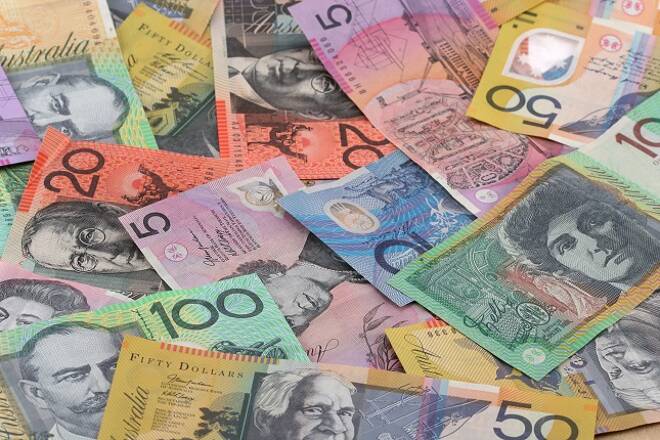Advertisement
Advertisement
AUD/USD and NZD/USD Fundamental Weekly Forecast – Underpinned by Strength in Commodity Prices
By:
Investor attention will turn to the RBA’s May policy meeting on Tuesday where it is widely expected to keep rates at a record low of 0.1%.
The Australian and New Zealand Dollar finished lower last week after a steep break on Friday erased all of the week’s previous gains. Traders blamed the loss on end-of-the-month profit-taking in the U.S. Dollar. Prior to the sell-off, the Aussie was on track for its fourth straight weekly gain and the Kiwi was set up for its fifth straight weekly rise.
Last week, the AUD/USD settled at .7711, down 0.0038 or -0.49% and the NZD/USD finished at .7162, down 0.0034 or 0.47%. The Australian Dollar close 1.53% higher in April, while the New Zealand Dollar gained an impressive 2.58%.
Weekly Recap
The Australian and New Zealand Dollars were underpinned last week by strength in commodity prices with iron ore rallying more than 30% in the past month and copper at decade highs. Prices of soft commodities and foods have also risen in recent days, particularly benefiting the Kiwi Dollar.
A dovish U.S. Federal Reserve also provided support, but stronger than expected U.S. economic data may have limited gains.
On Wednesday, the Fed left policy unchanged as expected. Additionally, Fed Chairman Jerome Powell acknowledged the U.S. economy’s growth, but said there was not enough evidence of “substantial further progress” toward recovery to warrant a change to its ultra-loose monetary settings.
Despite the Fed’s dovish tone, U.S. Treasury yields inched higher last week on the back of stronger-than-expected U.S. economic data.
Last week, the U.S. Commerce Department said first-quarter gross domestic product rose 6.4%, versus the 6.5% expected by economists polled by Dow Jones. The Labor Department reported that 553,000 new jobless claims were filed last week, just above the 528,000 estimated by economists.
On Friday, data showed a 4.2% rebound in U.S. consumer spending in March, amid a 21.1% surge in income as households received additional COVID-19 relief money from the government, supported the dollar. That led to a 0.4% rise in the core personal consumption expenditures (PCE) index, compared with a gain of 0.3% the previous month.
In Australia, consumer prices rose by much less than expected in the first quarter partly due to government subsidies for home building, while a very tame reading for core inflation suggested monetary policy would stay supper loose for a long time to come.
The consumer price index rose 0.6% in the March quarter from the prior three-month period, under market forecasts of a 0.9% gain. The annual pace picked up to 1.1%, from 0.9%, but again missed forecasts of 1.4%.
The figure also remained far below the Reserve Bank of Australia’s (RBA) target band of 2%-3%.
Weekly Outlook
Investor attention will turn to the RBA’s May policy meeting on Tuesday where it is widely expected to keep rates at a record low of 0.1%.
Next Friday, the RBA will deliver its quarterly economic outlook, “which will formalize the strength in labor market conditions through forecast upgrades to the unemployment rate,” ANZ economists said in a note.
The only policy event on the New Zealand calendar slated this week is the country’s central bank Financial Stability Report.
If the reason for last week’s reversal is valid, the AUD/USD and NZD/USD uptrends should resume this week. If there is an underlying reason for the weakness like rising U.S. Treasury yields then look for further weakness.
For a look at all of today’s economic events, check out our economic calendar.
About the Author
James Hyerczykauthor
James Hyerczyk is a U.S. based seasoned technical analyst and educator with over 40 years of experience in market analysis and trading, specializing in chart patterns and price movement. He is the author of two books on technical analysis and has a background in both futures and stock markets.
Advertisement
